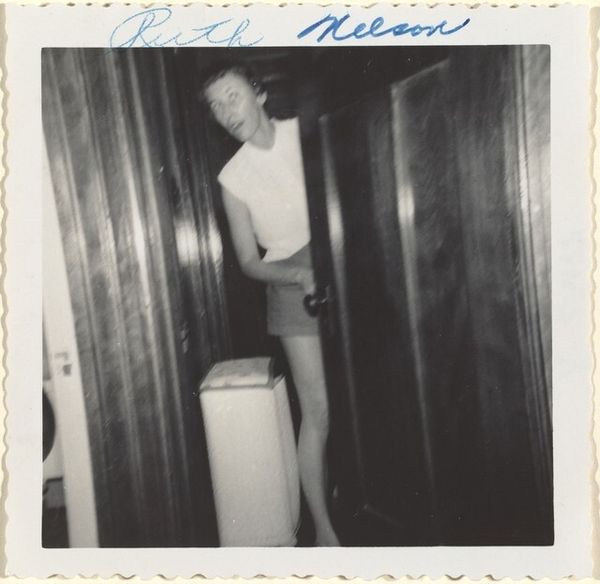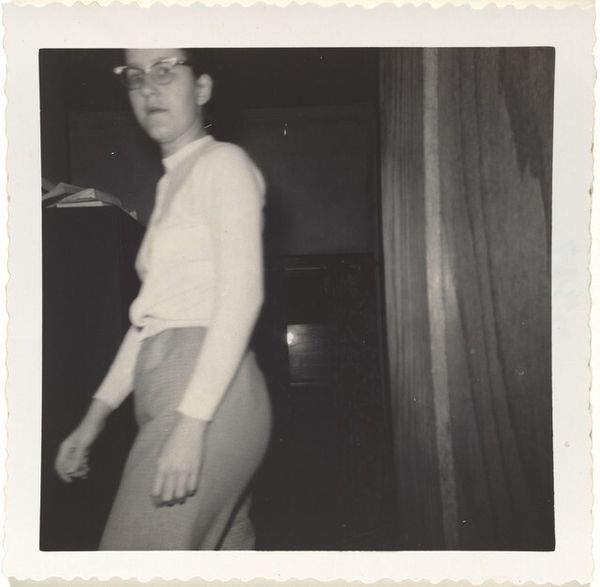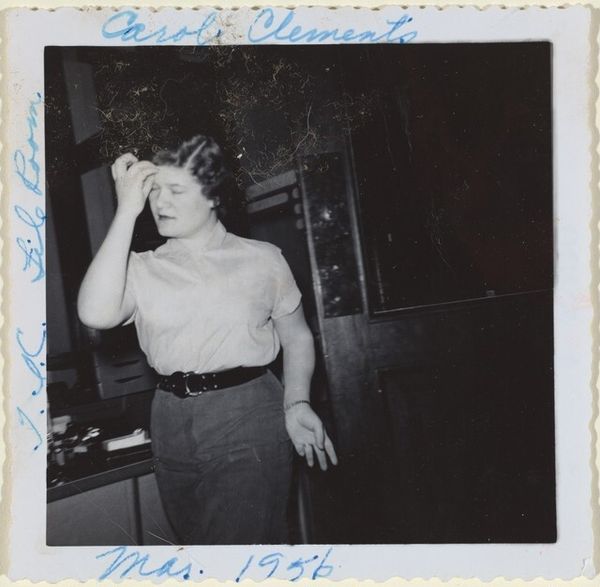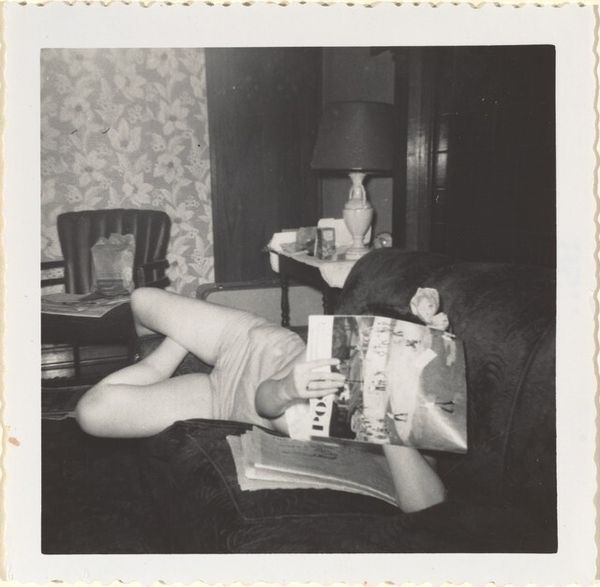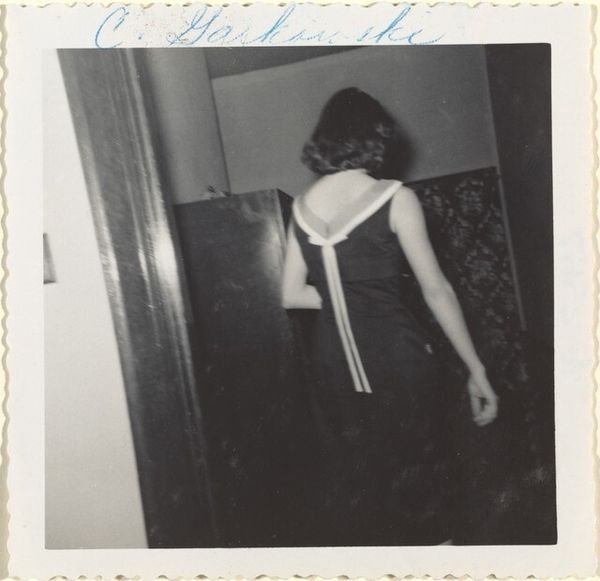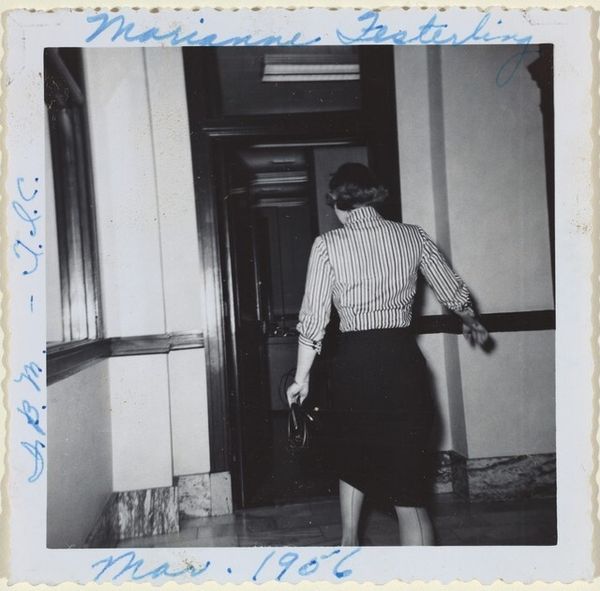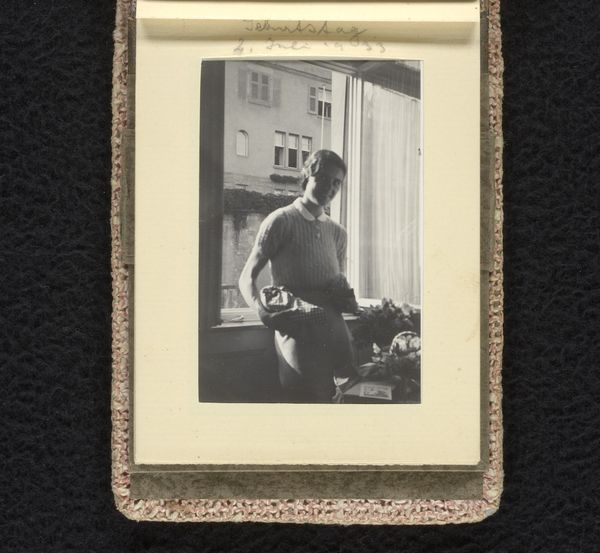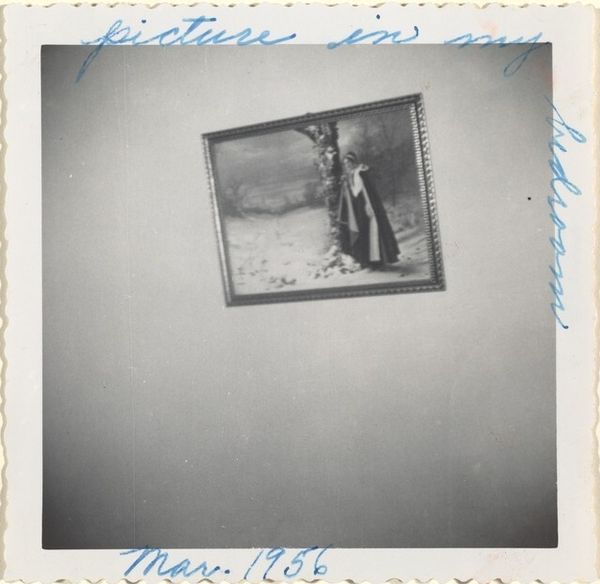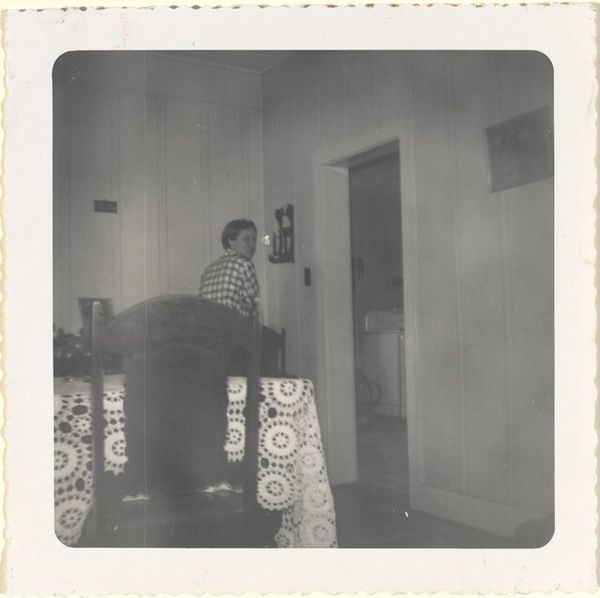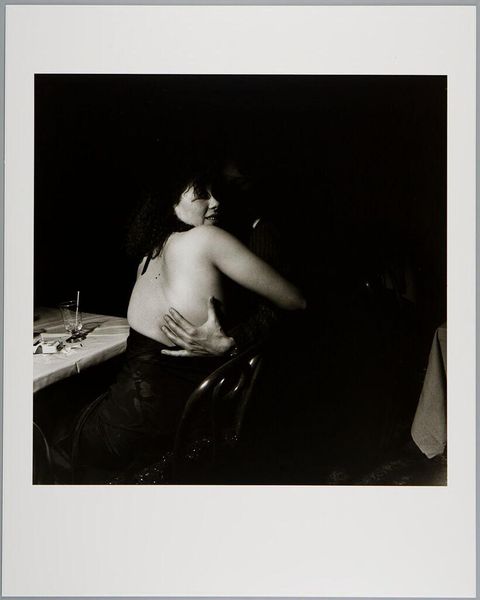
photography, gelatin-silver-print
#
portrait
#
photo of handprinted image
#
photo restoration
#
photography
#
gelatin-silver-print
#
genre-painting
#
realism
Dimensions: image: 7.6 x 7.8 cm (3 x 3 1/16 in.) sheet: 8.8 x 9 cm (3 7/16 x 3 9/16 in.)
Copyright: National Gallery of Art: CC0 1.0
Editor: This is "F. Steinhofer, File Room T.L.C.", a gelatin-silver print from 1956. The subject is covering their face with their hand. It's interesting, but what strikes me first is how dark the photograph is and the strong diagonal line cutting through the composition. What can you tell me about it? Curator: Indeed. Let's consider the tonal range. Observe how the blacks dominate, yet subtle gradations in grey delineate form, particularly in the subject's face and hand. Note the effect of the harsh light on the textures of the suit and background. Ask yourself, how does this distribution of light and dark contribute to the image's overall effect? Editor: So, you're focusing on the light and how it shapes the image. I notice the subject is off-center, creating an imbalance. Was that a common compositional choice? Curator: The asymmetrical arrangement invites speculation. Why is the subject not centered? Does it mirror the potential chaos implied by 'file room'? The artist’s intention remains elusive, pushing us to consider diverse viewpoints to decipher potential implications. Editor: The roughness of the print itself seems to be a feature as much as a flaw. Does that texture change how we read it? Curator: Precisely! The photograph’s surface is integral. Those imperfections, the scratches, the faded areas—they aren’t distractions, they contribute to its unique materiality and age. It reinforces the tangibility of the photograph as an object, a physical trace of a moment in time. It speaks to a past that is both recorded and decaying. Editor: So, by looking at the way the light and dark are distributed and the condition of the print, we get a much richer experience of the work than just looking at the person in the photo. Thanks! Curator: My pleasure. By attending to the intrinsic visual components and the objecthood of the photograph, we begin to understand its power transcends the simple depiction.
Comments
No comments
Be the first to comment and join the conversation on the ultimate creative platform.
